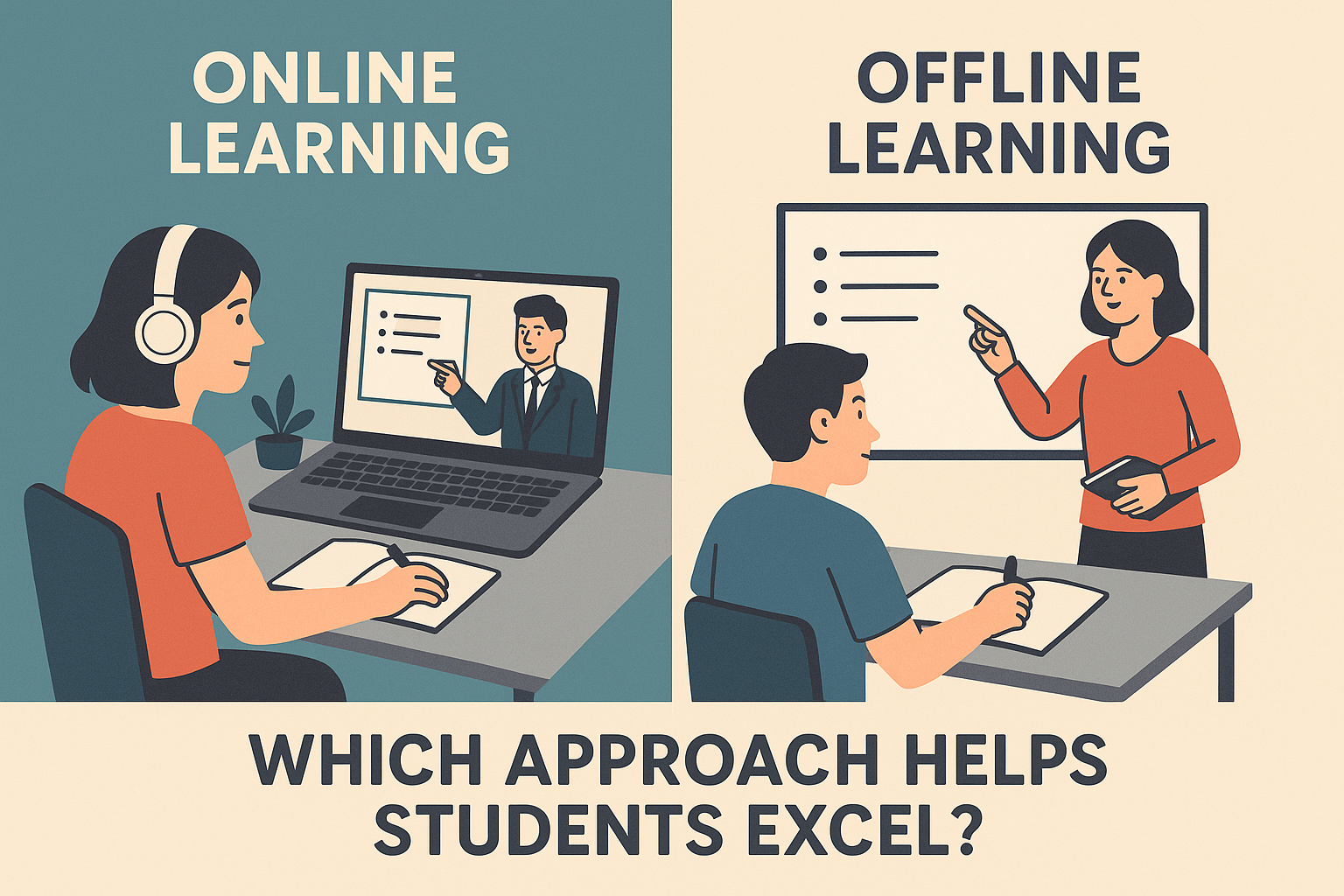


Last updated on: October 2, 2025
5 Views
Yuvika Rathi
College Student

Both online and offline learning can produce strong student outcomes — the modality that “helps students excel” depends on design, student profile, subject, and supports available. Well-designed online courses often match or slightly outperform traditional face-to-face instruction, but in-person classes excel at social presence, hands-on practice, and supporting students who struggle with self-regulation. Blended (hybrid) models frequently capture the best of both worlds when implemented thoughtfully.
Students, parents, and educators searching “online vs offline learning”, “remote learning outcomes”, or “hybrid learning benefits” want practical answers they can act on: Which mode improves grades? Which supports well-being and employable skills? How much does cost, access, or the subject (lab vs. reading) matter? This article answers those with research, real-world patterns, and pragmatic checklists.
Meta-analyses and large reviews. Multiple meta-analyses find that, on average, students in well-designed online learning do as well or slightly better than those in traditional classrooms — especially when courses include interactive elements, frequent feedback, and opportunities for social presence. This pattern repeats across higher education and some professional trainings.
Nuance from pandemic-era research. Emergency remote learning during COVID-19 produced mixed outcomes: some studies reported learning losses (particularly in mathematics and for disadvantaged students), while others reported no change or modest gains where online programs were intentionally designed. The difference usually traces back to course design quality and student supports.
Social presence and engagement matter. Studies show that opportunities for interaction (student–student, student–teacher) drive engagement and improve online learning outcomes. Where social presence is low, students report lower motivation and understanding.
When it works best: motivated, independent learners; theory-heavy subjects; adult and professional learning; learners with reliable internet and a quiet study environment.
When it works best: young learners, hands-on vocational subjects, students needing scaffolding or social supports.
Blended models — mixing online content with in-person sessions — show especially strong outcomes in many studies. They allow asynchronous instruction for theory and focused in-person time for practice, discussion, and assessments. Recent meta-analyses and large reviews find blended approaches frequently outperform either mode alone when the split is purposeful (not just dumping lectures online).
Online challenges: isolation, distractions, low social presence, digital fatigue, inequitable access.
Fixes: build social interaction (discussion groups, breakout rooms), frequent low-stakes assessments, synchronous check-ins, clear course scaffolding, tech access programs.
Offline challenges: fixed schedules, commuting, limited course variety, variable teacher quality.
Fixes: integrate tech to expand resources, blended options for scheduling flexibility, teacher professional development.
If you choose online learning:
If you choose offline learning:
If you want hybrid:
Online learning can lower direct costs (travel, campus overhead) and expand access, but it can worsen inequities if students lack devices, bandwidth, or a quiet workspace. Pandemic research showed that disadvantaged groups often suffered the most during remote-only periods — a strong reminder: policy and funding matter.
Q: Is online learning better than classroom learning?
A: Not universally. Well-designed online courses can match or slightly outperform in-person courses, but in-person learning remains superior for hands-on skills and social support.
Q: Which subjects are best online?
A: Theory-heavy courses (programming, history, some business topics) adapt well online; labs, clinical work, performing arts, and vocational skills are best with in-person components.
Q: What’s the single most important factor for success?
A: Course design (interaction, feedback, and alignment) plus student supports — regardless of modality.
There’s no one-size-fits-all answer. Online learning offers flexibility, personalization, and scalability; offline learning offers social presence, hands-on practice, and structure. The evidence indicates that quality of design and support matters more than modality alone. For most students, a blended approach — strategic online content plus targeted in-person practice — provides the strongest path to excel.